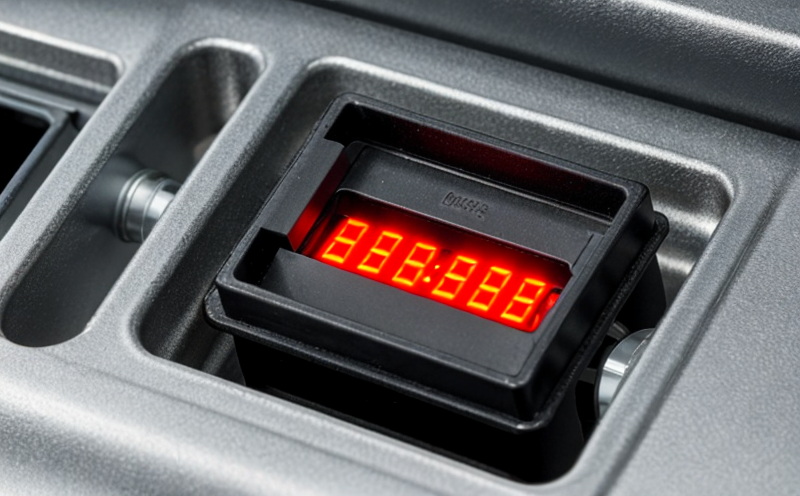Use of creep data in material selection for high-temperature applications
Unlocking Material Selection for High-Temperature Applications The Power of Creep Data
In the realm of materials science and engineering, selecting the right material for high-temperature applications is a crucial task that can make or break a projects success. As industries continue to push the boundaries of innovation and efficiency, the need for reliable and durable materials has never been more pressing. This is where creep data comes into play a vital tool in material selection that ensures optimal performance under extreme conditions.
At Eurolab, we specialize in providing laboratory services that help businesses like yours make informed decisions about material selection. Our expertise in creep data analysis enables us to provide you with the insights you need to ensure your high-temperature applications meet their intended purpose. In this article, well delve into the world of creep data and explore its significance in material selection for high-temperature applications.
What is Creep Data?
Creep data refers to the deformation or strain that occurs in materials over time when subjected to constant stress at elevated temperatures. This phenomenon is particularly relevant in high-temperature applications, where materials are exposed to prolonged periods of heat and pressure. Understanding creep behavior is essential for predicting material performance under real-world conditions.
The Importance of Creep Data in Material Selection
Selecting the right material for high-temperature applications can be a daunting task due to the vast array of options available. However, using creep data as a decision-making tool ensures that you choose materials with the optimal balance of properties for your specific application. Here are some key benefits of incorporating creep data into your material selection process
Key Benefits of Using Creep Data in Material Selection
Predictive Maintenance By understanding how materials will perform under high-temperature conditions, you can schedule maintenance and replacements accordingly, minimizing downtime and extending equipment lifespan.
Improved Performance Selecting materials with suitable creep resistance ensures that your equipment operates within its intended parameters, reducing the risk of premature failure and ensuring optimal performance.
Increased Efficiency With accurate predictions of material behavior, you can optimize design and engineering processes, leading to faster development times and reduced costs.
Enhanced Safety Materials selected based on creep data are less likely to fail catastrophically, reducing the risk of accidents and minimizing potential liabilities.
Compliance with Regulations By choosing materials that meet industry standards for high-temperature applications, you can ensure compliance with regulatory requirements and avoid costly penalties.
The Role of Creep Data in High-Temperature Applications
Creep data plays a vital role in various industries, including
Power generation (e.g., turbines, generators)
Aerospace (e.g., jet engines, rocket components)
Chemical processing (e.g., heat exchangers, reactors)
Oil and gas production (e.g., pipes, valves)
In each of these sectors, understanding creep behavior is essential for designing equipment that can withstand the rigors of high-temperature operation.
What to Expect from Eurolabs Creep Data Services
At Eurolab, our team of experts uses advanced analytical techniques to provide you with comprehensive creep data analysis. Our services include
Creep testing and characterization
Material selection and optimization
Design and engineering support
We utilize state-of-the-art equipment and software to ensure accurate and reliable results. Our goal is to empower your business with the knowledge needed to make informed decisions about material selection.
Frequently Asked Questions (FAQs)
Q What types of materials can be tested for creep behavior?
A We test a wide range of materials, including metals, alloys, ceramics, and polymers.
Q How do I choose the right material for my high-temperature application?
A Our team will work with you to identify the key performance requirements for your project. Based on this information, well provide recommendations for suitable materials.
Q Can creep data be used for other applications beyond high-temperature settings?
A Yes, creep behavior is relevant in any situation where materials are subjected to prolonged stress or deformation.
Q How long does a typical creep testing process take?
A The duration of our creep tests can vary depending on the material and testing parameters. Our team will work with you to determine the most efficient testing schedule for your specific needs.
Conclusion
In conclusion, creep data is an essential tool in material selection for high-temperature applications. By understanding how materials behave under prolonged stress at elevated temperatures, businesses like yours can make informed decisions that ensure optimal performance and minimize risks. At Eurolab, were committed to providing expert laboratory services that empower your business with the knowledge needed to succeed in the world of high-temperature engineering.
Whether youre a seasoned engineer or just starting out, our team is here to help you navigate the complex landscape of creep data analysis. Contact us today to learn more about how Eurolab can support your material selection needs and unlock the full potential of your high-temperature applications.




